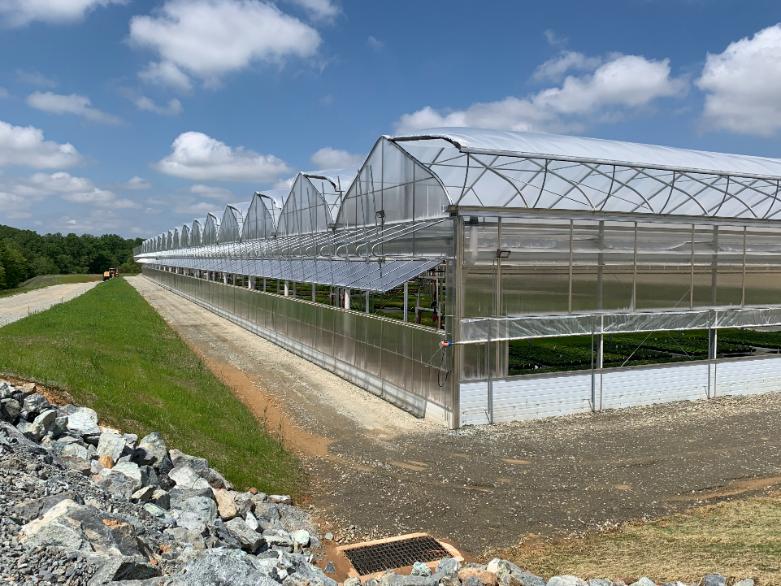Tips for managing generational differences between millennials and baby boomers in your commercial greenhouse
In many industries, workplaces employ workers from more generations than ever before, and in a greenhouse environment, it’s likely that you employ people of all ages, all with different strengths to offer your company. Effective team management is crucial in such diverse settings.
Different perspectives offered by separate generations can be very beneficial to your commercial greenhouse operation, but issues can quickly arise when these differences are not managed properly. Implementing team collaboration strategies can help mitigate these challenges.
Here are a few tips on managing generational differences in your commercial greenhouse:
Be careful not to assume negative stereotypes
It’s very easy to become focused on generational stereotypes, especially when buzzwords like managing generational differences, millennial, and baby boomers are thrown around in the media and on the internet aimlessly. A millennial eager to move up quickly in the world is often seen as entitled whereas the opinions based on the experiences of a baby boomer can come across as short sighted and uninformed in today’s realities. These stereotypes aren’t always true and can usually be attributed to the experiences and challenges faced by an entire demographic. While there are some truths to the overall experiences and behaviors of generations as a whole, it’s important to recognize the strengths the different generations offer and use them to your advantage. It’s equally important to treat each employee as an individual with their own unique opinions and attitudes, focusing on effective team management.
To avoid negative generalizations, it may be worth sending your managers to a class that teaches about recognizing generational differences and how to both adapt to and embrace these differences. It’s important to remember that you’ll achieve more productivity and higher employee satisfaction if managers adapt to employees and not the other way around, utilizing team collaboration strategies.
Give all of your employees a voice
All employees, regardless of age or tenure, should feel they are heard in their workplace. It’s important that every employee knows they can come to you with an idea and equally that they have someone to talk to when they have concerns or complaints. This includes ensuring that employees have a method of communicating in a way that they feel comfortable. Older generations are known to be more vocal during in-person meetings or may prefer a phone call, whereas younger generations may feel more comfortable making suggestions through an email or a text message. Consider different options for communication and ensure your employee knows these methods are available. A blanket-communication policy could mean you’re missing out on valuable insight from your team members. Managing generational differences effectively can enhance overall team collaboration strategies.
Be willing to adapt
If there is a better way to do something, do it. You may have a younger or newer employee who quickly recognizes that something being done in the greenhouse could be done more efficiently. It’s important to take those suggestions and to remember that your more experienced workers don’t always have the best ideas. Telling an employee “this is the way it’s always been done” and being unwilling to change, is a quick way to lower morale and is likely to result in you losing good employees. It also creates an attitude of resistance to change which means you will have difficulty with new improvement initiatives. Give everyone the opportunity to implement even small ideas, regardless of their age or experience. Effective team management involves embracing new ideas and fostering an environment where all team collaboration strategies are valued.
Make goals and expectations clear
Generations may each have a different approach to work, and there are different subsets within those groups that have different approaches as well. It’s a good idea to have the goals and expectations for the day clearly written on your communication board so that everyone is on the same page. It’s much easier to lay out the expectations in the same way for all employees and then provide feedback according to preference. For example, some people may like having feedback given to them in-person whereas some may prefer to receive that feedback through an email to which they can refer back. This approach aids in managing generational differences effectively.
A little flexibility will go a long way
Accommodating 100 completely different schedules for 100 completely different people sounds impossible and is probably unrealistic, but providing flexible options and being accommodating to employees with unique circumstances will boost satisfaction and will create an environment where employees feel they can be open and honest with you about why and when they need time off. This flexibility is a key aspect of effective team management.
You may have some employees nearing retirement who are willing to reduce their hours for reduced pay, you may have young parents wanting to work part-time or shorter days so they can bring their kids to and from school, or you may have a millennial eager to buy their first home who would love nothing more than to take the overtime hours other don’t want. This is not to suggest that employees can come and go as they please, but working with employees to achieve a level of work-life balance that works for them can actually be more cost-efficient, improve overall satisfaction and reduce employee turnover. Implementing these team collaboration strategies will enhance productivity and cohesion.
Give your employees a purpose
All employees, regardless of age or position, want to know that they are playing a key role in the success of the company. Regularly keeping employees in the loop about how the company is doing, where the company is headed, and how they play a role in the success of the business is crucial for managing generational differences. These conversations can take place during annual reviews with individual employees, but should also take place throughout the year during daily, weekly, or monthly meetings and through other methods of communication. This small communication effort from you will reap big rewards in morale and productivity from your team and contribute to effective team management.
Facilitate positive working relationships
Some workplaces have implemented a mentoring program where a new employee has a mentor who has worked for the company longer. Giving an employee the opportunity to provide mentorship to another employee can be an easy boost to an employee’s ego and is a good way to get employees from different generations working together, fostering team collaboration strategies. A younger employee can learn from and benefit from the knowledge and experience of an older employee, whereas an older employee can learn to appreciate the fresh perspective a younger employee will bring.
Keep employees engaged
Not everyone learns or retains information and much of this depends on the individual, but there are patterns among generations as well. Accommodating different learning styles ensures that everyone has an equal opportunity to learn and do their best in the greenhouse. For example, Baby Boomers and Gen Xers might prefer to learn in a classroom-like setting, whereas millennials might enjoy something more interactive or online-based. Consider who you have on your staff and consider providing different training methods that will benefit you and your employees. This approach is essential for managing generational differences effectively.
You should also make employees aware of career opportunities within the company or within the industry that you can help them achieve. If you have a millennial that is eager to get ahead, don’t think of this as them not putting in their time at the bottom, but rather as an opportunity to train and grow a strong employee that may play a key role in your company. Provide them with problem-solving opportunities and special projects that may be outside their job description. Eager behavior should be rewarded, not hindered. These strategies contribute to effective team management and can enhance overall team collaboration.
Managers should be careful not to put older generation workers at a disadvantage when encouraging millennials. Opportunities should be made available across the board. More important than anything is to encourage your dedicated workers who are eager to take on responsibility and add value to your company.
Though generational differences are inevitable, ultimately all employees want to be heard and feel valued by their employer. With a few simple adjustments to how you communicate and interact with your employees, you will create a positive environment where employees can work together and thrive as a team. Emphasizing team collaboration strategies will help bridge any gaps and ensure a harmonious workplace.








